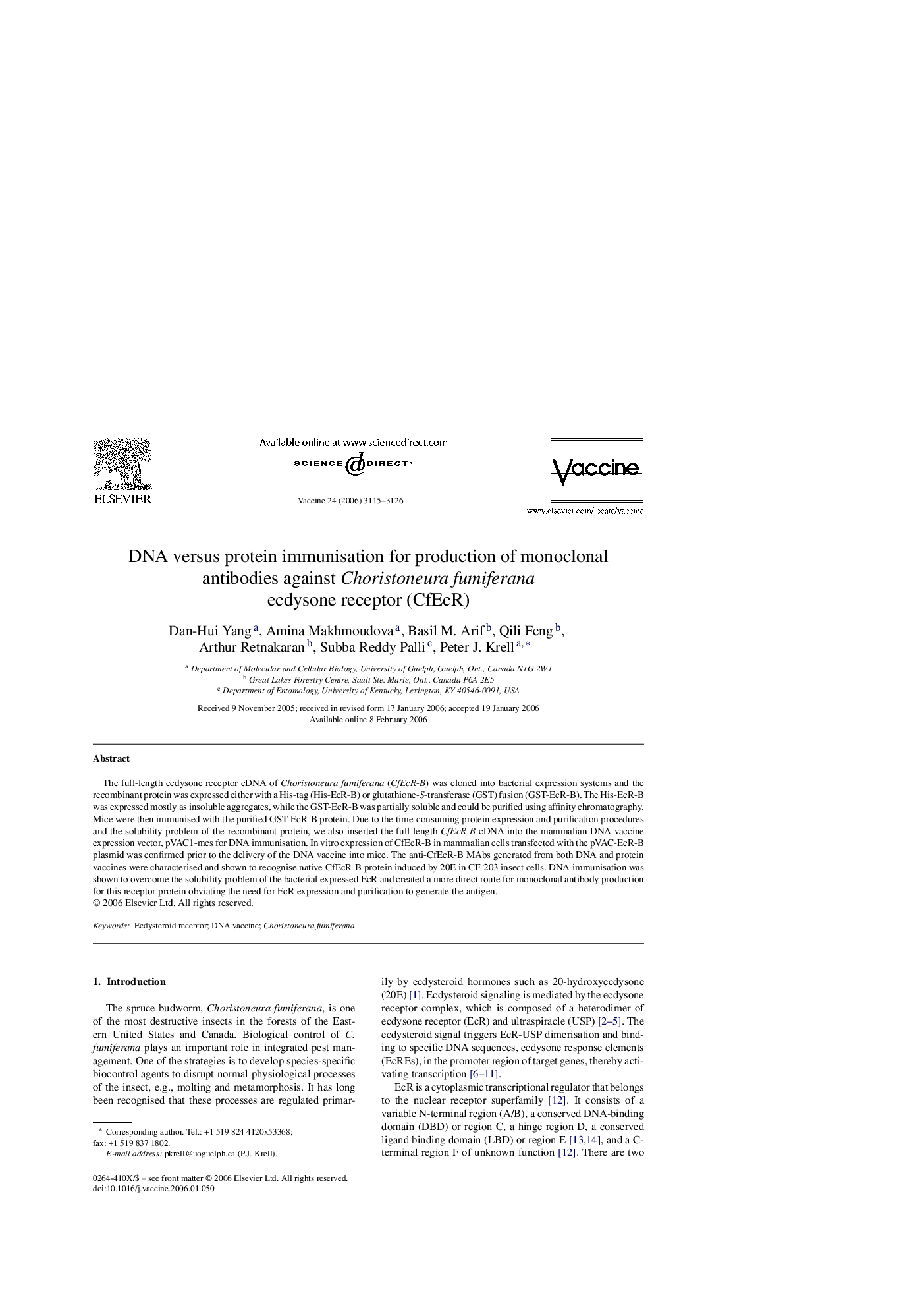| Article ID | Journal | Published Year | Pages | File Type |
|---|---|---|---|---|
| 2410261 | Vaccine | 2006 | 12 Pages |
The full-length ecdysone receptor cDNA of Choristoneura fumiferana (CfEcR-B) was cloned into bacterial expression systems and the recombinant protein was expressed either with a His-tag (His-EcR-B) or glutathione-S-transferase (GST) fusion (GST-EcR-B). The His-EcR-B was expressed mostly as insoluble aggregates, while the GST-EcR-B was partially soluble and could be purified using affinity chromatography. Mice were then immunised with the purified GST-EcR-B protein. Due to the time-consuming protein expression and purification procedures and the solubility problem of the recombinant protein, we also inserted the full-length CfEcR-B cDNA into the mammalian DNA vaccine expression vector, pVAC1-mcs for DNA immunisation. In vitro expression of CfEcR-B in mammalian cells transfected with the pVAC-EcR-B plasmid was confirmed prior to the delivery of the DNA vaccine into mice. The anti-CfEcR-B MAbs generated from both DNA and protein vaccines were characterised and shown to recognise native CfEcR-B protein induced by 20E in CF-203 insect cells. DNA immunisation was shown to overcome the solubility problem of the bacterial expressed EcR and created a more direct route for monoclonal antibody production for this receptor protein obviating the need for EcR expression and purification to generate the antigen.
